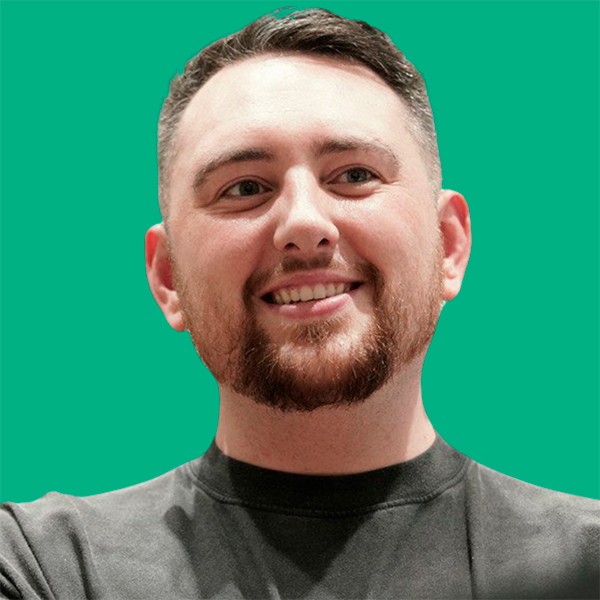I hope you enjoy reading this blog post. If you want my team to just do your marketing for you, click here.

I hope you enjoy reading this blog post. If you want my team to just do your marketing for you, click here.
Author: Jeremy Haynes | founder of Megalodon Marketing.

Earnings Disclaimer: You have a .1% probability of hitting million dollar months according to the US Bureau of Labor Statistics. As stated by law, we can not and do not make any guarantees about your own ability to get results or earn any money with our ideas, information, programs or strategies. We don’t know you and, besides, your results in life are up to you. We’re here to help by giving you our greatest strategies to move you forward, faster. However, nothing on this page or any of our websites or emails is a promise or guarantee of future earnings. Any financial numbers referenced here, or on any of our sites or emails, are simply estimates or projections or past results, and should not be considered exact, actual or as a promise of potential earnings – all numbers are illustrative only.
Hello and welcome! I’m Jeremy Haynes, and over the past decade, I’ve been helping businesses across various niches scale to impressive heights—including reaching that coveted $1 million a month mark. One of my go-to strategies for achieving such growth, especially with high-ticket products or services, is the call funnel. Today, I’m going to dive deep into how you can leverage this powerful funnel to transform your business.
Before we delve into the mechanics of the call funnel, let’s get one thing straight: everything starts with a great offer. If your offer isn’t compelling, no amount of marketing wizardry or funnel optimization will save you. A weak offer creates friction at every stage of your sales process:
On the flip side, a strong, irresistible offer smooths out these wrinkles:
Action Step: If you’re grappling with high marketing costs, low show rates, or poor close rates, pause and reevaluate your offer. Make sure it’s something your target audience not only wants but needs.
So, what exactly is a call funnel? In essence, it’s a strategic process designed to attract high-quality leads, qualify them, and then guide them towards scheduling a call with your sales team. Here’s how it typically works:
This funnel is particularly effective for high-ticket products or services, generally priced at $5,000 and above. There’s no upper limit here—I’ve worked with offers requiring a minimum investment of a million dollars, and the funnel remains just as effective.
To scale your business effectively, you need to keep a keen eye on specific metrics. These numbers will guide your decisions and help you optimize your funnel for maximum profitability.
This is one of the most critical metrics. It can vary widely—from as low as $50 to as high as $900—depending on your industry, offer, and target audience. Your goal is to reduce this cost without compromising the quality of your leads.
The show rate refers to the percentage of scheduled calls where the prospect actually shows up. A good show rate nowadays hovers between 50% and 80%. The higher, the better, as it directly impacts your sales opportunities.
This is the percentage of calls that convert into sales. Your close rate can tolerate some fluctuation, especially if you have a high Average Order Value (AOV). The key is to ensure that the revenue generated outweighs your marketing and operational costs.
Understanding these metrics allows you to create a financial model for your funnel:
Action Step: Develop a spreadsheet or use financial modeling software to project these numbers. This will help you set realistic goals and adjust your strategy as needed.
Now that we’ve covered the foundational aspects, let’s talk about how to attract those high-quality leads into your funnel.
When selling high-ticket items, especially to affluent demographics, your ads need to be sharp and to the point.
Prospects usually fall into different levels of interest:
Your Objective: Move prospects from curiosity to high interest through your marketing and sales efforts.
Action Step: Align your marketing messages to address prospects at each interest level, guiding them smoothly through the funnel.
An effective funnel isn’t just about attracting leads; it’s about guiding them seamlessly towards a purchase.
Your landing page is the first touchpoint after the ad. It should:
One common pitfall is the drop-off that occurs between the application and the scheduling of the call. To mitigate this:
Result: This integration can nearly eliminate the typical 50% drop-off rate, significantly increasing the number of scheduled calls.
After scheduling, the prospect lands on a confirmation page. This is a golden opportunity to further engage them.
Action Step: Review your current funnel and look for opportunities to integrate these elements, enhancing the overall user experience.
Securing a scheduled call is a win, but the battle isn’t over. Now, you need to ensure the prospect shows up.
Don’t shy away from frequent communication. When done right, it reinforces your value proposition and keeps you top of mind.
Why This Works: Prospects are busy. High-frequency, value-driven communication keeps them engaged and reduces no-show rates.
Action Step: Develop a comprehensive communication plan that spans from the time of scheduling up to the call itself.
In addition to emails and texts, content ads play a crucial role in keeping your prospects engaged.
Action Step: Collaborate with your marketing team to create and schedule these content pieces, ensuring they align with your overall messaging.
Your funnel is optimized, your marketing is on point, but without a capable sales team, conversions will fall flat.
Action Step: Invest in your sales team’s development, providing them with the tools and training they need to convert leads effectively.
Achieving $1 million a month isn’t just about ramping up ad spend; it’s about scaling intelligently.
Action Step: Implement regular forecasting sessions to anticipate growth needs and adjust strategies accordingly.
Scaling your high-ticket business to $1 million a month is not just a lofty goal—it’s an achievable reality when you have the right strategies in place. Let’s recap the key elements:
By meticulously executing each of these components, you’re setting your business up for predictable and exponential growth. Remember, the synergy between your offer, marketing, sales, and scaling strategies is what propels you toward that million-dollar-a-month milestone.
Now It’s Your Turn: Take these insights, apply them diligently, and watch as your business transforms. The path is laid out before you—it’s time to walk it.
Ready to revolutionize your business and achieve unprecedented growth? Implement these strategies today and take the first step toward your $1 million month.
Action step: Consider joining into Jeremy’s Inner Circle program so you can get the help you need to scale up.

Jeremy Haynes is the founder of Megalodon Marketing. He is considered one of the top digital marketers and has the results to back it up. Jeremy has consistently demonstrated his expertise whether it be through his content advertising “propaganda” strategies that are originated by him, as well as his funnel and direct response marketing strategies. He’s trusted by the biggest names in the industries his agency works in and by over 4,000+ paid students that learn how to become better digital marketers and agency owners through his education products.

Jeremy Haynes is the founder of Megalodon Marketing. He is considered one of the top digital marketers and has the results to back it up. Jeremy has consistently demonstrated his expertise whether it be through his content advertising “propaganda” strategies that are originated by him, as well as his funnel and direct response marketing strategies. He’s trusted by the biggest names in the industries his agency works in and by over 4,000+ paid students that learn how to become better digital marketers and agency owners through his education products.
This site is not a part of the Facebook website or Facebook Inc.
This site is NOT /endorsed by Facebook in any way. FACEBOOK is a trademark of FACEBOOK, Inc.
We don’t believe in get-rich-quick programs or short cuts. We believe in hard work, adding value and serving others. And that’s what our programs and information we share are designed to help you do. As stated by law, we can not and do not make any guarantees about your own ability to get results or earn any money with our ideas, information, programs or strategies. We don’t know you and, besides, your results in life are up to you. Agreed? We’re here to help by giving you our greatest strategies to move you forward, faster. However, nothing on this page or any of our websites or emails is a promise or guarantee of future earnings. Any financial numbers referenced here, or on any of our sites or emails, are simply estimates or projections or past results, and should not be considered exact, actual or as a promise of potential earnings – all numbers are illustrative only.
Results may vary and testimonials are not claimed to represent typical results. All testimonials are real. These results are meant as a showcase of what the best, most motivated and driven clients have done and should not be taken as average or typical results.
You should perform your own due diligence and use your own best judgment prior to making any investment decision pertaining to your business. By virtue of visiting this site or interacting with any portion of this site, you agree that you’re fully responsible for the investments you make and any outcomes that may result.
Do you have questions? Please email [email protected]
Call or Text (305) 704-0094